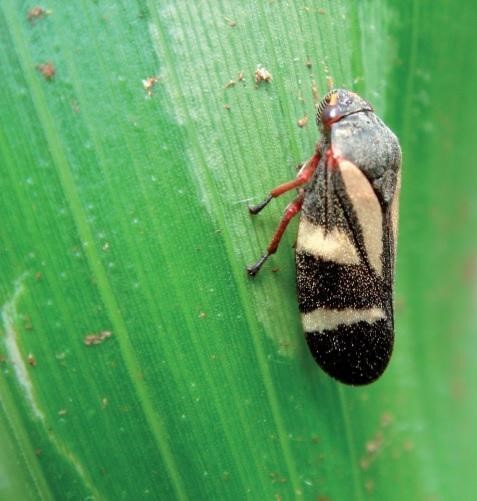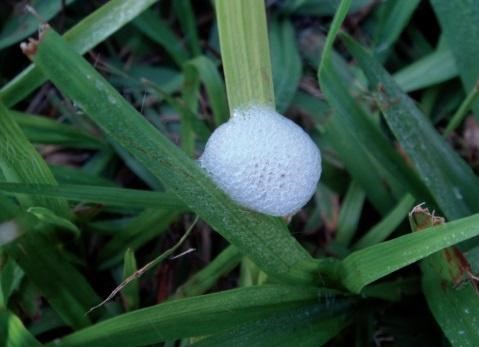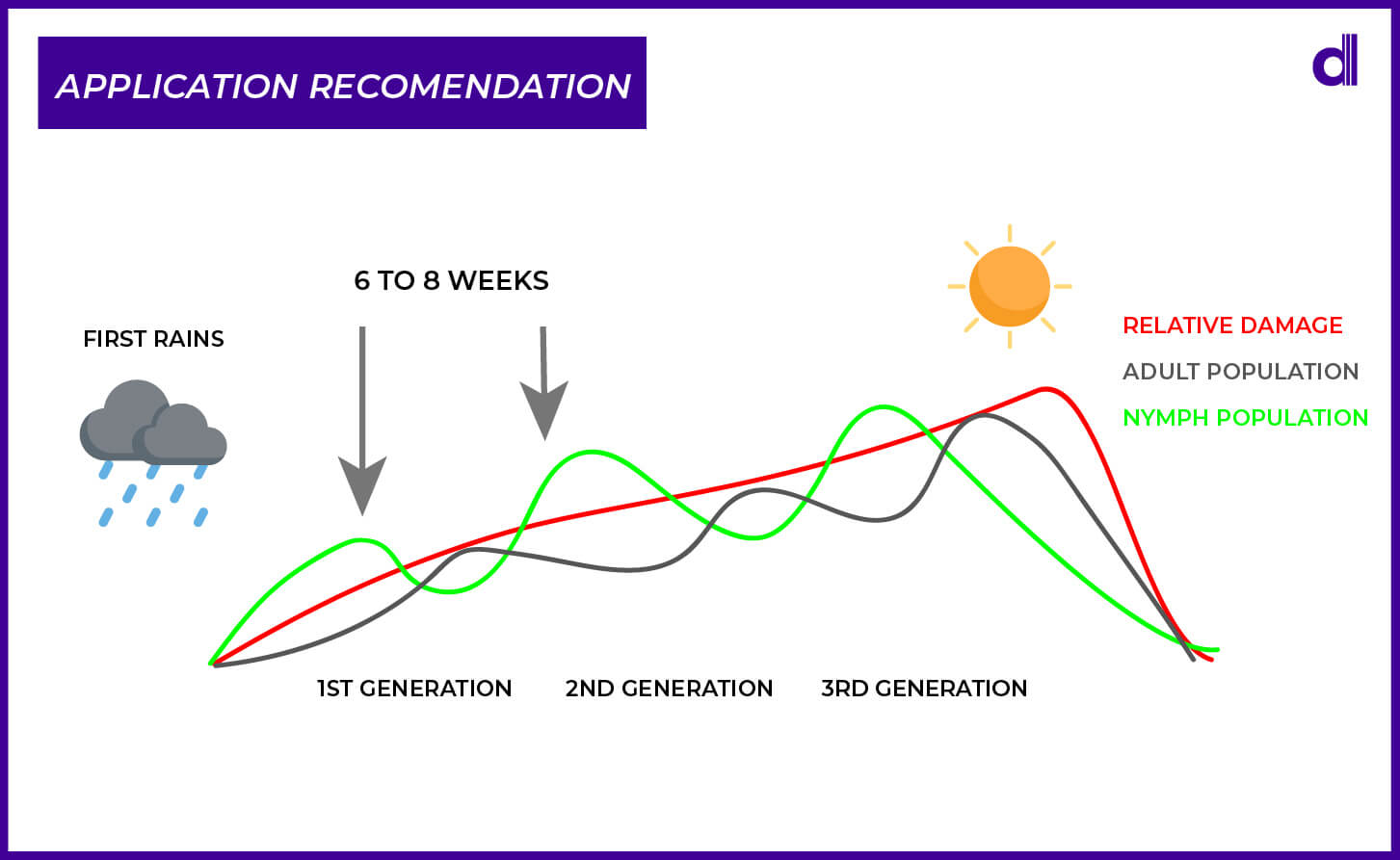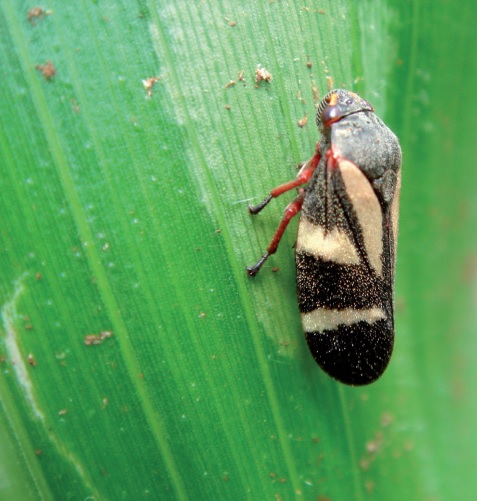In Brazil, the total pasture area corresponds to 159 million acres. Of this amount, 30% is occupied with natural pasture, and 70% is cultivated pasture (IBGE Census, 2017). These numbers show the strength of Brazilian cattle breeding, a world reference in the industry.
Like many agricultural crops, pastures are also affected by pest insects. Among these, the pasture spittlebugs stand out. The genera Deois and Mahanarva are the best known, the most important species being Deois flavopicta.

Photo: Ivan Cruz
The life cycle of spittlebugs lasts an average of 50 days when in favorable conditions. It has three stages: egg, nymph, and adult. The eggs are laid at the base of the plants and hatch at the beginning of the rains. The nymphs hatch from these eggs and feed on the plants, i.e., they cause damage. Throughout their development, they undergo exoskeleton (insect skin) changes. At the last exchange, they become adults, then reproduce, starting a new cycle.
In general, the occurrence of the pasture spittlebugs coincides with the rainy season. They present from three (colder regions) to six (warmer regions) generations in the year. In the dry season, they resist in egg form and can remain in this stage for up to 200 days. To detect the presence of this insect in the crop, look for masses of foam at the base of the plants. When they are in the nymph stage, these insects produce this characteristic foam that keeps the humidity around them and protects it from natural enemies.

Photo: Ivan Cruz
They are sucking insects and feed directly on plant sap. By inserting their mouth apparatus, they inject toxins into the plant tissue that can cause phytotoxemia (general intoxication). Its main damages are described below:
- Presence of yellowish and dry leaves;
- Plants with a “burnt” appearance;
- Slow plant growth;
- Presence of bare ground on pastures;
- Reduced productivity;
- Plant death;
The larger the pest population, the greater the economic damage caused by its infestation. Monitor your crop and watch for the first signs of pasture spittlebugs’ presence.
Grasses are the basis of cattle feed. Maintaining its quality is keeping the herd healthy. These areas need a lot of care to stay productive. However, they often do not receive the care they deserve due to the difficulty of measuring the problems that pests cause to production. Decoy believes that sharing information and technology is essential for the cattle breeder to act with greater assertiveness.
Our team has already developed a 100% biological treatment based on specific fungi to control the pasture spittlebug. Our strategy is to unite our technology with the producer’s experience in the field. In this manner, we can achieve effective biological control.
And what are the instructions for using this product? We recommend two applications. The first is after detecting the first adult pasture spittlebugs, which occur soon after the first rains. Monitor your pasture! The second application should be made 6 to 8 weeks after the first application. The figure below shows the application recommendation based on infestation initiation and generation development in the field.

Biological control is a powerful tool in the fight against pasture spittlebugs; it is accessible to use and preserves the phytosanitary and environmental quality of your pasture and animals. Learn more about biological control tools.
Decoy believes in the power of nature to combat pests in livestock. Keep following us! For more information, please contact our team at the Box below.
Bibliography
Sujii, E.R. Modeling, and simulation of the population dynamics of the grasshopper, Deois flavopicta (Homopteia: Cercopidae). PhD Dissertation – State University of Campinas, Institute of Biology, Campinas, SP, 1998.
Valério, J.R. Cigarrinhas-das-pastagens – Electronic Data – Campo Grande, MS : Embrapa Gado de Corte, 2009. 51 p (Documentos / Embrapa Gado de Corte, ISSN 1983-974X ; 179).



